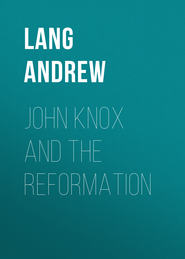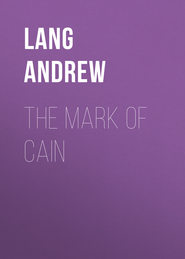По всем вопросам обращайтесь на: info@litportal.ru
(©) 2003-2024.
✖
The Mystery of Mary Stuart
Настройки чтения
Размер шрифта
Высота строк
Поля
193
Cal. For. Eliz. viii. 223-224.
194
May 6, Drury to Cecil.
195
Drury to Cecil, May 6. Cal. For. Eliz. viii. 223, 224.
196
Undated letter in Bannatyne, of 1570-1572.
197
See Stewart’s Lost Chapter in the History of Queen Mary for the illegalities of the divorce. The best Catholic opinion is agreed on the subject.
198
Melville, 182. Teulet, ii. 153, 170.
199
Cal. For. Eliz. viii. 235.
200
Drury to Cecil, Cal. For. Eliz. viii. 240.
201
Dates from James Beaton’s letter of June 17. Laing, ii. 106, 115.
202
Nau, 46-48.
203
Laing, i. 113. June 17, 1567.
204
Melville, p. 183.
205
Teulet, ii. 179.
206
Teulet, ii. 169, 170. June 17.
207
Bannatyne’s Memorials, p. 126.
208
Nau, 50-54.
209
Laing, ii, 115.
210
Bannatyne, Journal, 477, 482.
211
Chalmers, Life of Mary, Queen of Scots (1818), ii. 486, 487, note. I do not understand Randolph to bring these charges merely on the ground of Mary’s word. That he only adds as corroboration, I think, of facts otherwise familiar to him.
212
Mr. Froude has observed that the Lords, ‘uncertain what to do, sent one of their number in haste to Paris, to the Earl of Moray, to inform him of the discovery of the Letters, and to entreat him to return immediately.’ Mr. Hosack says that Mr. Froude owes this circumstance ‘entirely to his imagination.’ This is too severe. The Lords did not send ‘one of their number’ to Moray, but they sent letters which Robert Melville carried as far as London, and, seventeen days later, they did send a man who, if not ‘one of their number,’ was probably Moray’s agent, John Wood (Hosack, i. 352).
213
Cal. For. Eliz. viii. p. 261.
214
Spanish Calendar, i. 657.
215
Cal. For. Eliz. ix. pp. 354, 355.
216
Fénelon, Dépêches (1838), i. 19, 20.
217
Fénelon, i. 22. To this point we shall return.
Cal. For. Eliz. viii. 223-224.
194
May 6, Drury to Cecil.
195
Drury to Cecil, May 6. Cal. For. Eliz. viii. 223, 224.
196
Undated letter in Bannatyne, of 1570-1572.
197
See Stewart’s Lost Chapter in the History of Queen Mary for the illegalities of the divorce. The best Catholic opinion is agreed on the subject.
198
Melville, 182. Teulet, ii. 153, 170.
199
Cal. For. Eliz. viii. 235.
200
Drury to Cecil, Cal. For. Eliz. viii. 240.
201
Dates from James Beaton’s letter of June 17. Laing, ii. 106, 115.
202
Nau, 46-48.
203
Laing, i. 113. June 17, 1567.
204
Melville, p. 183.
205
Teulet, ii. 179.
206
Teulet, ii. 169, 170. June 17.
207
Bannatyne’s Memorials, p. 126.
208
Nau, 50-54.
209
Laing, ii, 115.
210
Bannatyne, Journal, 477, 482.
211
Chalmers, Life of Mary, Queen of Scots (1818), ii. 486, 487, note. I do not understand Randolph to bring these charges merely on the ground of Mary’s word. That he only adds as corroboration, I think, of facts otherwise familiar to him.
212
Mr. Froude has observed that the Lords, ‘uncertain what to do, sent one of their number in haste to Paris, to the Earl of Moray, to inform him of the discovery of the Letters, and to entreat him to return immediately.’ Mr. Hosack says that Mr. Froude owes this circumstance ‘entirely to his imagination.’ This is too severe. The Lords did not send ‘one of their number’ to Moray, but they sent letters which Robert Melville carried as far as London, and, seventeen days later, they did send a man who, if not ‘one of their number,’ was probably Moray’s agent, John Wood (Hosack, i. 352).
213
Cal. For. Eliz. viii. p. 261.
214
Spanish Calendar, i. 657.
215
Cal. For. Eliz. ix. pp. 354, 355.
216
Fénelon, Dépêches (1838), i. 19, 20.
217
Fénelon, i. 22. To this point we shall return.











